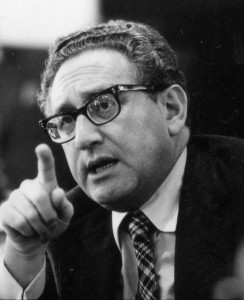The Boy Scout Fieldbook which I read many years ago advised neophyte campers to empty your pack after your first-ever campout and make three piles. The first pile should contain items you used every day. The second pile was for items used occasionally, and the third was for items that you took but never used. For your next campout, you should leave the first two piles at home. (The only exception is emergency equipment.)
That was excellent advice that carries over into other areas. I actually still follow it in my business travel, which is one reason I can go halfway around the world for two weeks with only carry-on luggage. The ability to travel light makes me more flexible, saves time, and ensures that I never lose my luggage. Just last week I arrived at Bangalore airport one hour before my scheduled class time (after a 26 hour delay—thank you, British Airways); if I had had to wait for luggage I never would have made it in time.
Another area where the advice also applies is in strategic presentations. The average presentation is packed with a lot of unnecessary weight. If you take a look at your first draft, you can actually sort your content into four “I” piles:
If you put your left hand into a bucket of cold water, and your right into hot water, and then plunge them both into a single bucket of room-temperature water, a funny thing will happen. Your sensations will reverse: your left hand will feel warm and your right hand will feel cold. There’s no magic in it, it’s simply the contrast between the starting and ending points of each that makes the difference.
In a similar way, the contrast between your start and end points in a presentation or sales call can make all the difference between success and failure.
Contrast is important for two reasons: it can create attention and it can affect the perception of the facts.
In her excellent book, Resonate, Nancy Duarte tells us that “People are naturally drawn to contrast because life is surrounded by it.” She then adds, “Your job as a communicator is to create and resolve tension through contrast.” The difference between contrasting ideas generates interest like the opposite poles of a battery generate electricity.
I first heard this story during a speech given by G. Gordon Liddy in 1979 when he spoke at Florida Atlantic University. I can’t vouch for its accuracy, but in the words of Jimmy Buffett, “don’t care if it’s true, ‘cause I love it so well.”
When Henry Kissinger became President Nixon’s National Security Adviser in 1969, he brought a reputation as a demanding taskmaster. So, when a staffer was given an assignment to write a position paper for his new boss, he understandably put in extra hours and took great pains to produce top-notch work. A day after he had turned it in, Kissinger called him into his office and asked him, “Is this the best you can do?”
The staffer promised he could improve it, and went back to his desk. He cancelled his other appointments, called his wife to tell her he would be home very late, and worked feverishly on the report: fine-tuning it, adding information, clarifying where necessary, etc. At the end of the week, he turned it in.
Probably the oldest piece of advice for presentation structure is the 3 Ts: “Tell them what you’re going to tell them; tell them; tell them what you told them.” It’s been around for a long time because it’s very effective. However, in this article, I’m going to tell you how and why you need to modify the 3 Ts for a presentation to senior executives.
The first T, tell them what you’re going to tell them, is even more important for strategic sales presentations. Executive decision makers are decisive and busy, so they want to know up front what you want them to do and why. They will then evaluate everything you say against those two bits of information as a marker, and will listen until they’ve heard enough to make up their minds. So, for a sales presentation, your introduction should say something like: “You have a problem with _____ that needs to be addressed immediately, and we have the best solution; at the end of this presentation, I’m going to ask for you approval to move forward with _______.”
Just make sure that the why is relevant to a high-level audience by referring to profit, process, or problem. It’s not about you or your product.
Say it clearly, directly and succinctly—just like a headline. In fact, your first T is the headline of your entire sales presentation. Just like a newspaper headline, if you’re too busy to read the article, you still get the gist of the story.
Why should you ease into it? They know you’re there to sell something, so cut to the chase. The only reason not to tell them what you’re going to tell them is when you have a hostile or skeptical audience, but that’s a topic for a future article.
The second T, tell them, is not one we have to cover much here. Just be sure to avoid a bait and switch. If you got their interest with the first T, your second T has to tie directly to what you said. Don’t tell them you’re going to show them how to solve a problem and then spend the body of your presentation with a schematic of how your product works.
The third T is totally different for a strategic sales presentation. Do not tell them what you just told them. They are quick studies, (or at least see themselves that way), so they will find it unnecessary at best and possibly even insulting. Don’t summarize; use the third T to test them. They are decisive and respect decisiveness in others, so ask them for a decision or action. This will be the true test of whether they have bought in to your premise that you promised in your first T.
So, what will you do differently for your next strategic sales presentation?




